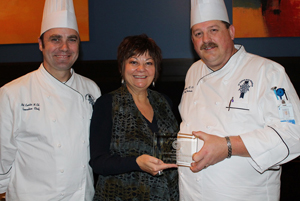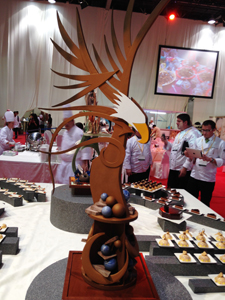Le Cordon Bleu in Portland Receives 2013 Chefs of Tomorrow™ Award
Monday, 09 December 2013 15:12
 Annual dinner for national foodservice media, prepared by students, recognizes an exemplary professional U.S. culinary-arts program.
Annual dinner for national foodservice media, prepared by students, recognizes an exemplary professional U.S. culinary-arts program.
Olson Communications is proud to announce that Le Cordon Bleu College of Culinary Arts in Portland, Ore., is the recipient of the 2013 Chefs of Tomorrow™ Award. Sharon Olson, founder and president of Chicago-based Olson Communications, presented the award on Oct. 29 at the annual dinner for foodservice media.
The Chefs of Tomorrow Award launched in 2008 as a grant program to assist the professional development of foodservice educators in postsecondary culinary-arts programs nationwide. According to Olson, Le Cordon Bleu College of Culinary Arts in Portland earned a 2013 award as an exemplary program preparing students for fulfilling careers in the hospitality industry.
“The broad and challenging hands-on curriculum at this venerable Portland institution draws on Le Cordon Bleu’s century-old tradition of immersion in the culinary-arts and hospitality world and instruction that emphasizes demonstration followed by practical application,” Olson says. “We were impressed with the cutting-edge facility and passion and dedication of the students in the program, who train with experienced and supportive chef instructors, faculty and staff.”

 Several foodservice educators contributed to the American Culinary Federation’s chef team’s second-place win among 12 teams in Dubai.
Several foodservice educators contributed to the American Culinary Federation’s chef team’s second-place win among 12 teams in Dubai. Chef Jason Ziobrowski of InHarvest inspires culinary grads of Victory Trade School.
Chef Jason Ziobrowski of InHarvest inspires culinary grads of Victory Trade School. Famous artwork by Lou Dorfsman, to be showcased in The Culinary Institute of America’s new Marriott Pavilion, will support the Hudson Valley as a destination for art and culture.
Famous artwork by Lou Dorfsman, to be showcased in The Culinary Institute of America’s new Marriott Pavilion, will support the Hudson Valley as a destination for art and culture.